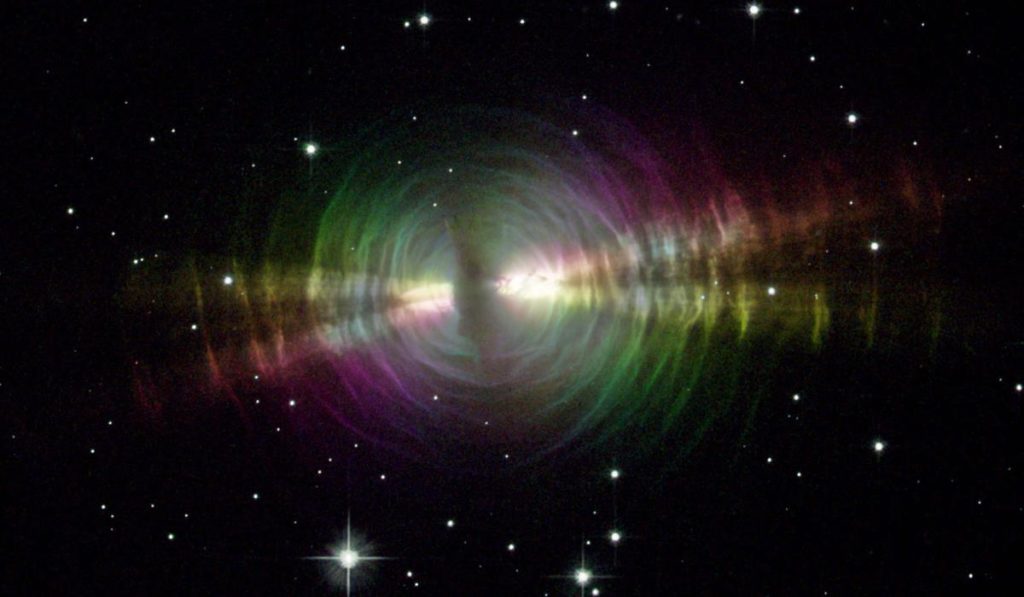
Photo: The Egg Nebula. NASA, W. Sparks (STScI) and R. Sahai (JPL)
By Kevin Schindler
As featured on the Arizona Daily Sun website on March 27, 2021
We celebrate most holidays with a variety of imagery, and Easter is no exception. For example, that lattice of sugary yumminess glazed atop the hot cross buns we enjoy on Good Friday represents redemption, while the colorful eggs of Easter Sunday celebrate rebirth.
Not surprisingly, these icons have found their way into the night sky. Within the constellation Cygnus, the Swan, lies the asterism known as the Northern Cross and an enigmatic, elongated feature worth further exploration. Dubbed the Egg Nebula, it represents the transitional phase of a red giant star evolving into a white dwarf.
From 1945 to 2011, the Air Force operated a scientific research facility at Hanscom Air Force Base near Lexington, Massachusetts. Originally founded for communications development, the facility went through several name changes but by 1974 was known as the Air Force Cambridge Research Laboratories (AFCRL).
In one study at the facility that year, scientists detected more than 2,000 sources of infrared radiation. One of the these, catalogued as CRL 2688 (CRL stands for Cambridge Research Laboratories), caught the attention of astronomers because of its unusual, nebulous nature. Within weeks, observers using the 60-inch telescope at Mount Lemmon in southern Arizona imaged the object and dubbed it the Egg Nebula because of its oval shape.
Scientists soon realized that the object had earlier been documented by Swiss astronomer Fritz Zwicky, who catalogued it as a dwarf galaxy. Zwicky was a prolific scientist who spent the majority of his career working at Mt. Wilson and Palomar observatories in California. The Zwicky Transient Facility — an automated sky-survey at Palomar used to detect transient objects (things that vary in brightness over a short period of time), such as supernovae and gamma ray bursts — is named in Zwicky’s honor.
Further research by astronomers, including Lowell Observatory’s Henry Giclas and future Lowell director Jay Gallagher, helped clarify the nature of the Egg Nebula. It is not a dwarf galaxy, but a so-called proto-planetary nebula within our own Milky Way Galaxy, located approximately 3,000 light years from Earth.
A proto-planetary (also called pre-planetary) nebula has nothing to do with planets (the “planet” part of the name is a leftover misnomer from when observers believed these objects represented planets being formed). Rather, it represents a short-lived period in the evolution of stars, when a red dwarf begins shedding its outer layers as it morphs into a planetary nebula.
The Egg contains a central star that was a red dwarf up until a few hundred years ago. Though the star is blocked from view by a thick cloud of dust, some of its light shines like beacons through holes in this obscuring matter, while other light penetrates some of these layers of clouds, illuminating them like ripples of water on a pond.
The Egg Nebula was the first proto-planetary nebula identified by scientists and has played an important role in explaining stellar evolution. Like its Easter counterpart, this egg represents a stage in life, a phase that will soon pass on its way from degeneration to eventual rebirth.